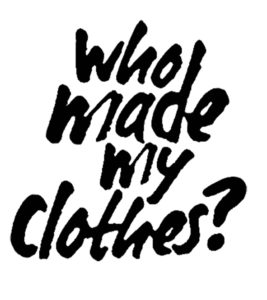Methodology
How to communicate with hearing impaired learners during online lessons
- Authors: Katarína Peterová, Veronika Habalová
- Editor: Martina Mareková
- Graphic design: Nina Hegyiová
Introduction
This methodology was created as a support material for online education of hearing impaired people within project RecyCOOL Lessons with the aim to enhance the online learning experience for learners with hearing difficulties. It’s created for anyone who would like to try facilitating RecyCOOL Lessons online for their peers or various target groups.
Project description
RecyCOOL Lessons is a project connecting topics of the fashion industry and sustainability with distance learning forms of non-formal education as a response to demands of today’s world. Our clothing is an everyday part of our lives, yet transparency of its production is on a worldwide scale almost non-existable, who made our clothes and what they are made of are questions with answers difficult to find.

Talking about the fashion industry is important because it’s an industry with heavy impacts on the environment, society and each of us as an individual. It’s unthinkable that the fashion industry could sustain in the form as we know it today, and its flaws were completely exposed with the arrival of a pandemic and following social crisis of workers in this industry.
The main target group of fast fashion campaigns are young people, who are not only trying to find their own style, but also trying to live their lives in more sustainable and responsible ways. Finding verified information about products we are buying in chaos around us, picking the relevant parts and connecting them in context is demanding, but doable, as long as we lead young people to comprehend this with critical thinking.
RecyCOOL Lessons project idea was raised and developed by Star Team, which was a group of four young people, volunteers in Fashion Revolution Slovakia, actively participating in running the organisation and its campaign at the time. They came from and worked with other young people, so they knew their needs and ways of dealing with them. Activism, eco-groups and volunteerism – young people want to solve topics surrounding them, but the topic of the fashion industry is completely absent especially in formal and non formal education. The only way to educate about it is through self-study and following campaigns on social media.
The aim of the project was to widen and deepen learners‘ competencies, obtain their better orientation within topics of fashion industry and its (un)sustainability, its place in the world economics context, understanding the impact of the fashion industry on the environment, society and economy, its connection with our everyday lives and finding solutions (literally) through our own wardrobes. Lessons try to develop know-how and skills related to this – evaluation of own user habits, ability to amend own clothing, critical approach to commercial campaigns, recognition of greenwashing, etc.
RecyCOOL Lessons are text and video lessons about the fashion industry and sustainability, usable in formal and non-formal environments by young people and young people with hearing difficulties. These open source lessons offer cross-sectional education absent in the formal education system and they are reflecting subjects of classic school subjects.
Activities in these lessons are usable in different conditions and youth workers/educators are able to adapt them to the needs of their target groups. Universality of lessons is guaranteed thanks to their form.
This methodology helps not only people with hearing impairments, but also those who have reading problems (such as dyslexia) or have a worse level of reading competence. They are also for people who have a mother tongue other than the language of the lesson.
This methodology helps not only people with hearing impairments, but also those who have reading problems (such as dyslexia) or have a worse level of reading competence. They are also for people who have a mother tongue other than the language of the lesson.
So what are the basics for taking our online Lessons with hearing impaired learners?
Your appearance
Make sure you can see your face well. Learners have to see your face and your mouth very well!
Example of how your appearance should be on the screen:
Examples of what to avoid:
- the mouth is not visible
Keep eye contact with the camera (or look into your eyes on the screen) – eyes are for HI people like communication tools – when you stop making eye contact, it means the communication is over for them.
Look straight into the camera – Do not turn your head while you are speaking. Also, do not hold your head with your hands or put it in front of your mouth. If you need to turn around or take something – stop talking.
Light – it’s recommended to schedule meetings during the day in natural light rather than in the evening. However, be careful not to have too much light on your face (direct sunlight or a lamp). Have a one-colour background behind you – if it’s possible.
Your appearance can support understanding – wear a one-colour t-shirt (black is the best). You can highlight your lips with lipstick and men should be preferable without a beard.
Technical support
Check the strength of your internet connection before starting the lesson. Do not download anything at this time and use the best techniques/computer/laptop you have. The image of your face must be of the best quality. The sound of your voice should match the opening of your mouth. Calls cannot be disrupted and not make annoying noises (it can resonate uncomfortably in hearing aids).
Encourage everyone to have their microphones turned OFF/MUTE, thanks to that your lessons will not be disturbed by sounds from surroundings.
And also – make sure your surrounding is quiet.
Lessons content
Have your lesson ready. Prepare a script and notes. Prepare all stuff – tools, materials, maps, fabrics… Do not cover your mouth when showing objects (e.g. maps)!
Speak fluently and clearly. Not fast, not slow, not quite, not too loud. Take small breaks between sentences – it can happen that your internet connection will be unstable. The sound of your voice should match the opening of your mouth.
Introduce yourself at the beginning of the lesson (or everyone who will lead the lesson) and simply describe the objective of the project and describe the parts of the online lesson.
It is important that one person leads the lesson. Conversation between two people can interfere with concentration. If two of you want to lead a lesson – it’s OK, but make sure you pass the word to each other and don’t jump into each other’s speech.
Start with a brief information about the lesson. Short entry with a few points – it will help the learner to orient themself (and you will know which points to stick to and whether those individual points follow in turn).
Don’t use complicated and foreign English words. Explain everything as simply as possible and use short sentences rather than long and complicated ones.
By adhering to these guidelines, you can create an inclusive and conducive environment for effective learning and engagement, especially for individuals with hearing impairments.
You can find more about non-formal education at RecyCOOL Academy, a platform dedicated to education about fashion and making your own clothes.
Saving the world one fashion garment at a time.
